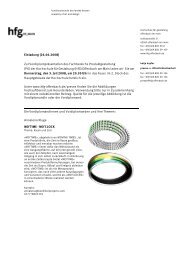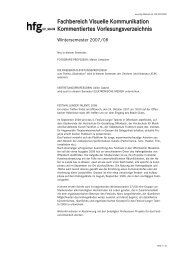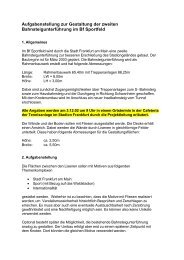User Manual
User Manual
User Manual
Create successful ePaper yourself
Turn your PDF publications into a flip-book with our unique Google optimized e-Paper software.
1 2<br />
3<br />
5<br />
A<br />
+/-<br />
B<br />
ISO / WB<br />
Save<br />
Custom Options #3, #17<br />
and #22 used to deactivate<br />
and alter the settings<br />
for the rear control wheel/<br />
Quick Adjust facility.<br />
4<br />
6<br />
F<br />
AF<br />
Clr<br />
R<br />
85<br />
Alternatively, you can also pre-set the initial zone reading in order<br />
to save time and effort where there is no freely available ‘zone 5’<br />
subject for light measuring. For example, you might be on a sandy<br />
beach where you know that sand is normally classified as zone 6.<br />
You can pre-programme the zone placement by holding down<br />
the AE-L button while choosing the new zone value and turning<br />
the front control wheel until zone 6 appears. All new placements<br />
will then be zone 6.<br />
Exposure compensation/Quick Adjust 1, 2, 3, 4, 5<br />
The exposure compensation facility, for both manual and automatic<br />
modes can be set from -5 to +5 EV, in 1/3, 1 or 1/2 EV increments<br />
(Custom Option #3) and is visible above the scale in the viewfinder<br />
and as a ± symbol on the grip display.<br />
The quickest way to make an adjustment in auto-exposure mode<br />
is use the rear control wheel.<br />
To make a temporary compensation setting in an auto-exposure<br />
mode using the Quick Adjust facility:<br />
a) Select chosen auto exposure mode.<br />
b) Turn the rear control wheel to select the chosen amount of<br />
compensation.<br />
The amount is displayed in the viewfinder as both an EV figure<br />
complete with a ‘minus’ or ‘plus’ prefix (A in illustration 3),<br />
and as a marker above a ‘minus’ to ‘plus’ scale (B in illustration<br />
3).<br />
Default settings provide 1/3 EV compensation and an immediate<br />
clearing of the setting after capture.<br />
However, in Custom Options #3 you can select 1/3, 1 or 1/2 EV<br />
increment changes, in Custom Options #22 you can choose to<br />
retain the setting after capture and in Custom Options #17 you<br />
can deactivate the facility.<br />
To make a fixed exposure compensation setting, proceed as follows<br />
with the camera in active mode:<br />
1) Press the +/- button on the viewfinder.<br />
2) Turn either the front or rear control wheels to increase or<br />
decrease the amount of compensation in 1/3 EV steps.<br />
3) The amount is displayed in the viewfinder as both an EV figure<br />
complete with a ‘minus’ or ‘plus’ prefix (A in illustration) ,<br />
and as a marker above a ‘minus’ to ‘plus’ scale (B in illustration).<br />
4) Press Clr (AF button) to reset any compensation back to zero.<br />
5) Press Save (ISO / WB button) to retain the setting.<br />
6) A ‘±’ symbol is then displayed between the aperture and shutter<br />
speed setting as confirmation of the setting.



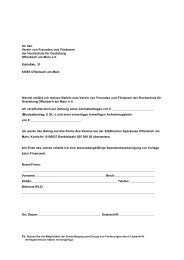
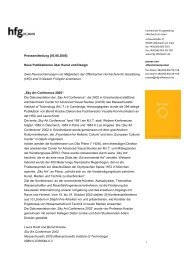


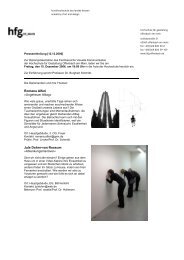

![Einladung [07.02.2006] - Hochschule für Gestaltung Offenbach am ...](https://img.yumpu.com/13375413/1/184x260/einladung-07022006-hochschule-fur-gestaltung-offenbach-am-.jpg?quality=85)

